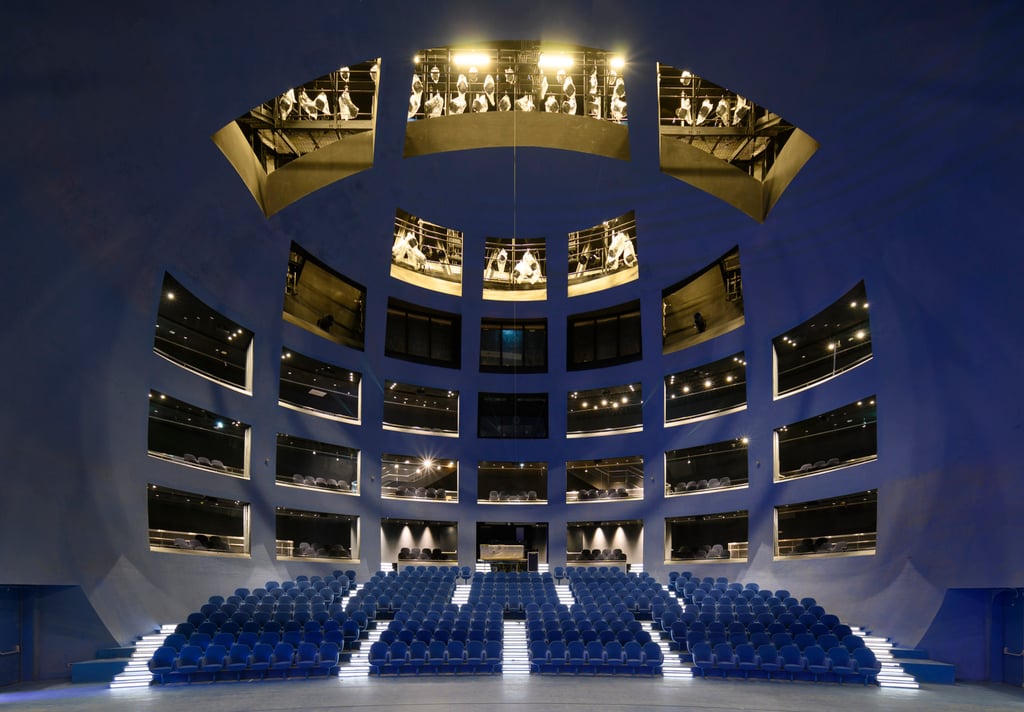Why this Taiwan icon is next on our travel bucket list: the avant garde Taipei Performing Arts Centre could join monuments across the globe as a not-to-be-missed architectural attraction

- Millions of holidaymakers journey to the Egyptian pyramids and the Great Wall of China every year – now a new architectural wonder might be on the map
- Designed by OMA and located atop the Shilin Night Market, the centre joins other iconic buildings from Frank Gehry’s Guggenheim Museum Bilbao to Norman Foster’s The Gherkin in London
All three are prime examples of architecture as attraction, and as the industry continues to innovate and cities look for ways to distinguish themselves, even far more modern landmark buildings are becoming destinations of their own.

Throwing its hat into the ring as an architectural wonder worthy of a visit is the new Taipei Performing Arts Centre. Like fellow modern marvels The Gherkin (officially 30 St Mary Axe) in London by Norman Foster, Frank Gehry’s Guggenheim Museum Bilbao, or Herzog & de Meuron’s National Stadium – the Bird’s Nest – in Beijing, the sheer audacity of the Taipei Performing Arts Centre is set to make it a target for architecture-obsessed travellers.
Described by its designers OMA as “an architecture in limbo, specific yet flexible, undisrupted yet public”, it floats above the city’s teeming, iconic Shilin Night Market like some kind of alien scout craft, its facade as distinct as any classical structure. The geometric forms and contrarian aesthetic bring a visual disconnect unlike nearly anything else in Asia, and that was a disconnect architect David Gianotten embraced when Rotterdam-based OMA pitched for the project in 2008.
At the time, Shilin Night Market was set for removal to make way for the theatre.

“We went there for a site visit and immediately saw the night market had such a vibrancy that we thought it would be such a pity to remove it, to take the low culture out and put high culture back in that space,” Gianotten recalled. The Taipei City Government hadn’t considered having both, so Gianotten immediately began work on a proposal that would lift the entire building off the ground. “The ground would remain public domain and the energy from the Shilin Night Market could still be on that ground plain, and the formal theatre would be above it … Suddenly it was like 1+1+1 = 5.”
Gianotten worked alongside the legendary Rem Koolhaas (who designed CCTV Headquarters) on the theatre complex, ultimately laying out an area of almost 60,000 square metres with three performance halls. Gianotten wanted to get away from the European model of consuming culture – “old” people at the opera, “young” people at experimental dance performances, and so on – and tap into Taipei’s more inclusive attitude. The entire complex pivots on a central cube that consolidates all the stages, support areas and public spaces to create a new relationship between consumers and art.